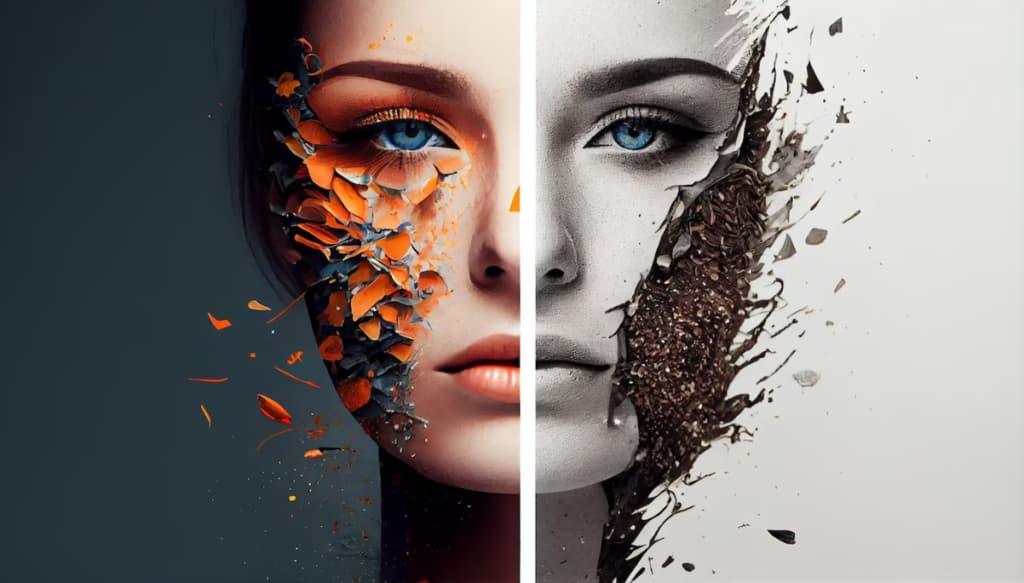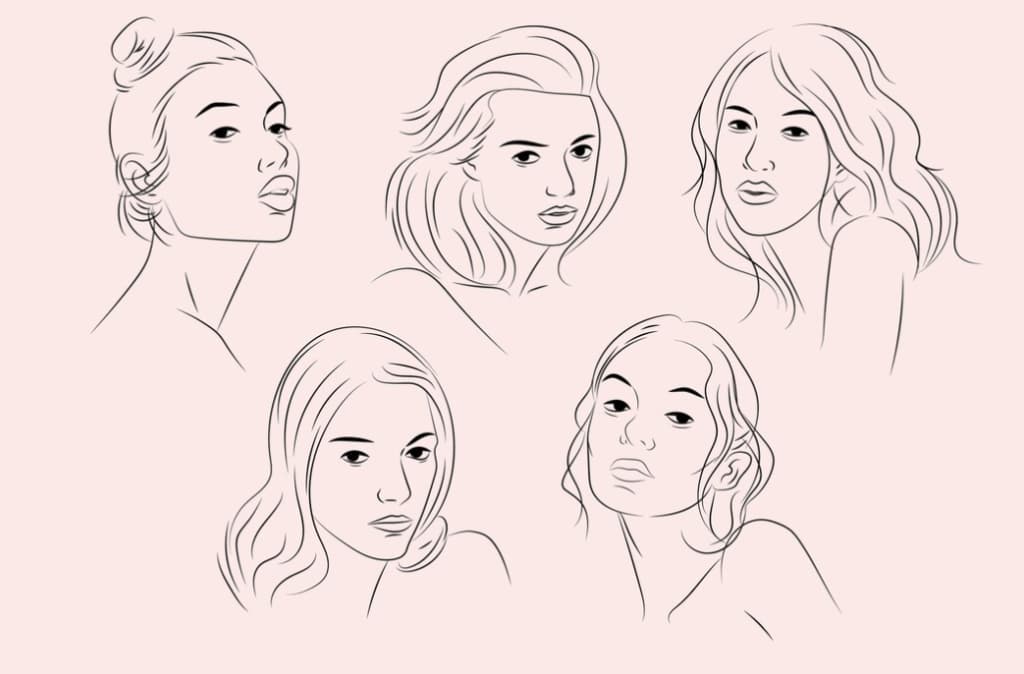In this comprehensive guide, we present a plethora of ways to hone face drawing skills for aspiring artists. Regardless of where you are on your artistic journey, this guide offers a wealth of valuable insights aimed at injecting creativity into your drawing routine. Let’s delve into the world of face art drawing.
Ultimate Guide to Practicing Face Art Drawing for Beginners
Beginners seeking to foster their face drawing abilities have a multitude of practices to choose from:
- Classical portrait studies;
- Drawing from sculptures;
- Portraits by other artists;
- Stylized drawing studies;
- Studying the different parts of the face;
- Gesture drawing faces;
- Drawing faces from imagination;
- Practicing facial expressions.
Doing Classical Portraits: The Foundation of Face Art Drawing
Developing observational drawing skills using simple tools like pencil and paper forms the bedrock of classical portrait studies. An emphasis on subtle facial features, shapes, and structure enhances your understanding of facial realism within set time limits. Careful consideration of real-life models, if available, can offer more accurate reference points. This enriching practice paves the way to mastering hand-eye coordination, draftsmanship, and observation.
Drawing from Sculptures: Understanding Three-dimensional Faces
Sculpture drawing can help beginners grasp the complexities of the human face as a collection of three-dimensional elements. This practice emphasizes the planes, shapes, and values of the face without the distraction of extrinsic elements like colour and texture. Drawing from sculptures can be a great source of inspiration, helping artists visualize the face better.
Exploring Art Styles Through Other Artists’ Portraits
By studying and replicating art from admired professionals, artists can gain insights into different stylistic choices, simplifying shapes and values, and understanding the artistic process. This method provides a fun and educational way for artists to refine their style and draw inspiration from successful art pieces.
Stylized Drawing Studies: Developing Your Unique Art Style
Adopting another artist’s style as a reference point and drawing a new piece can be an exciting venture. It can lead artists to explore different art styles and utilize them in their work, a valuable skill in the art industry.

Delving Deep into the Different Parts of a Face
Accepting the challenge of drawing single parts of the face in detail encourages an in-depth understanding of facial structures. This practice enhances the artist’s grasp of unique facial shapes and attributes.
Gesture Drawing: Quick and Effective Sketching Techniques
This fast-paced sketching technique focuses on capturing the essential elements of facial structure. Drawing in public spaces, such as a library or coffee shop, can offer an abundance of diverse models. This technique reinforces the practice of quickly capturing the core elements of a face.
Drawing Faces from Imagination: An Important Artistic Skillset
Drawing from imagination allows artists to design original characters, crucial for those aspiring to be concept artists or illustrators. This skill requires constant practice and a rich visual library for effective execution.
Drawing Facial Expressions: A Challenge Worth Tackling
Capturing facial expressions can be a daunting task due to the dynamic nature of the human face. A focus on unchanging facial landmarks can help maintain facial proportions when tackling different expressions.

Observational Drawing: Learning from Life
Drawing live models presents an authentic and valuable learning opportunity. Whether it is drawing self-portraits or asking friends and family to pose, this practice teaches you to appreciate the subtleties of life in art.
Digital Art: Experimenting with Technology
Using digital tools for face art drawing opens a new world of possibilities. With diverse brushes, textures, and easy modifications, this practice offers a wide array of creative freedom.
Conclusion
This guide presents a variety of practices that beginners can explore to enhance their face drawing skills. From classical portraits to digital art techniques, each method offers unique insights into the art of capturing the human face. Showcasing creativity through practice, observation, and exploration is the key to mastering face art drawing.
